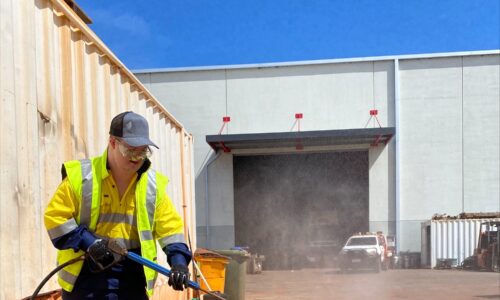Robotic Drilling Systems to ‘Green’ Drills: Where Drilling Is Headed
For those outside the industry, some drilling businesses might look as though they have moved 10 feet in the last ten years. After all, it’s the same essential task: making a hole and getting sample out of it, right? Wrong. Ranger has been investing in innovations to make drilling safer, more accurate and more efficient, including the implementation of automated robotic drilling systems. What else is on the horizon for drilling tech?
Investment in Drilling Technologies
Deloitte’s Tracking the trends 2020 report notes that “The digital era has presented mining companies with a significant opportunity to innovate, reduce costs, enhance productivity, improve safety performance, and realize operational efficiency improvements,” before going on to say that this is easier said than done, with the industry’s ongoing reliance on back-end technology systems.
Ranger Drilling’s first robotic drilling system was built into Rig 17, commissioned in 2019. We partnered with the Perth-based Cortex Intelligence Systems to improve the efficiencies of our machines, including radio remote control rod loader, as well as Live Data Tracking (LDT) capabilities. LDT allows us to track operations against daily KPIs, such as metres drilled, and adjust workflows or timelines accordingly. It’s just one of the ways that data analysis is changing drilling.
Though data tracking in operational technology (OT) and self-driving vehicles are making the intelligent mine a reality, we recognise that it’s essential to put a focus on people, not just technology. How we train our team to use new technology keeps them ahead of the game in a changing industry. There are sound economic benefits to invest in automation; a 2017 Alpha Beta report suggests that automation could unlock $2.2 trillion in economic benefits for Australia by 2030.
Australian innovation matters to our industry’s long-term viability. Just look at the ‘decoupling’ in tech we are seeing between China and the USA. The threat to ban Tik Tok might not mean much to your business, but it’s a signal that your choice of tech ecosystem and platforms need to be carefully considered. The fact that the Australian government banned the participation of Huawei and ZTE in building the nation’s 5G network, further solidified the choice to partner with an Australian owned and run company like our own.
Green Drilling Technologies
The trend towards decarbonisation means that the sector must continue to integrate environmental issues into business decisions.
Automated rigs use less energy and reduce the CO2 emissions required to drill the same distance. Small footprint rigs use fewer people to rig up, do less damage to roads, are quieter, and require less downtime. There is also less need for support vehicles and associated crew. As businesses look to reduce operating costs and investors look for ethical investments, it’s evident environmental stewardship is imperative to our industry’s right to operate.
Changing Markets and Emerging Mineral Exploration
Western Australia will continue to be a global player in the iron ore game for some time to come; however, the growth in demand for other minerals cannot be ignored. Lithium use has grown significantly in recent years, being used in portable devices, power tools and electric bikes. All of the world’s largest car manufacturers are now making electric vehicles, and it’s only a matter of time before all consumer transport will become fully electric.
Australia’s Lithium Economic Demonstrated Resources (EDR) was estimated to be 1538 kilotonnes (kt) in 2013, the bulk of which is known to be located in deposits around Greenbushes and the Mount Marion in Western Australia.
Western Australia has several light and heavy rare earth projects under evaluation. Resource companies are putting an increased focus on so-called ‘transition minerals’ — such as lithium, cobalt, copper, and nickel — which are needed to support advancements and uptake in electric vehicles, solar panels and wind turbines. But serious thought has to be given to how the materials are obtained for this low-carbon transition, and where it is coming from. Businesses are being tracked on their human rights records, and investors in the sector continue to demand more transparency on processes and remediation.
Training for the Future of Resource Exploration
As automation becomes increasingly common on our rigs, we’re looking at what skills will be needed for the coming decades in the industry. Ranger is investing in upskilling our team in remote operation drilling technologies, including off-site monitoring of real-time vision of all drilling parameters, engine temperatures, engine load and RPM, compressor readings, as well as fault diagnosis and troubleshooting.
To learn more about the Ranger fleet or our services in Diamond Core Drilling, Air Core Drilling, Reverse Circulation Drilling and Water Bore Drilling, get in touch with the team.

